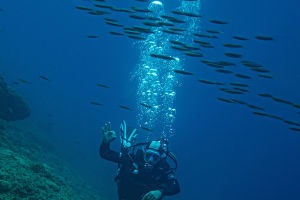Editing Tension
Have you ever wondered how much a photograph changes after the moment it's taken? In today's digital age, photography isn't complete until the post-processing stage.
But this phase introduces a fascinating tension—how much should editing enhance or alter the original image while preserving its artistic integrity?
Let's explore the dynamic relationship between photography post-processing and creative expression, a topic that continues to spark debate among artists and audiences alike.
The Role of Post-Processing in Photography
Post-processing refers to the adjustments and enhancements applied to a photo after capture, using software like Adobe Photoshop or Lightroom. This stage allows photographers to correct technical imperfections such as exposure, contrast, and color balance, ensuring the image looks polished and professional.
Beyond corrections, post-processing offers tools for artistic manipulation—altering tones, adding effects, or even compositing multiple images. This flexibility transforms photography from simple documentation into a form of creative storytelling, where the photographer's vision can fully emerge.
The Creative Tension: Authenticity vs. Artistry
Here lies the core tension: the desire to maintain the photograph's authenticity versus the urge to push creative boundaries. Some argue that excessive editing risks distorting reality, turning photos into unrealistic or artificial representations. Others believe that creative manipulation is essential to expressing deeper emotions, themes, or concepts.
This debate is especially intense in genres like documentary and photojournalism, where factual accuracy is paramount. However, in fine art photography, pushing the limits of editing often defines the artist's unique style.
Historical Context: From Darkrooms to Digital Editing
Post-processing is not a new phenomenon. In the era of film photography, darkroom techniques such as dodging, burning, and chemical toning were used to enhance prints artistically. These manual processes required skill and intention, much like digital editing today.
The transition to digital brought unprecedented possibilities but also amplified the debate. While digital tools make editing faster and more accessible, they also challenge traditional notions of photographic truth and authenticity.
Ethical Considerations in Post-Processing
With great power comes responsibility. Photographers must consider the ethical implications of their edits, especially when images influence public perception or document reality. Transparency about the extent of post-processing can help maintain trust between artists and viewers.
Experts suggest guidelines for ethical editing: avoid misrepresenting subjects, disclose significant alterations when relevant, and respect cultural or social contexts. These principles ensure that post-processing supports rather than undermines the artwork's integrity.
Techniques That Bridge the Gap
Many photographers find creative solutions that balance authenticity with artistry. Subtle color grading can evoke mood without drastically altering the scene. Selective sharpening or softening guides the viewer's eye while maintaining overall realism.
Composite images or surreal effects are usually presented clearly as artistic interpretations, inviting viewers into an imaginative experience rather than a literal one. These techniques demonstrate how post-processing can enrich storytelling while respecting the original capture.
Post-Processing as Artistic Expression
For many artists, the editing phase is where their vision truly comes alive. Manipulating light, texture, and color can transform a simple photo into a powerful work of art. Post-processing becomes a form of visual language, allowing photographers to communicate abstract ideas, emotions, or social commentary.
This creative freedom has expanded the boundaries of photography, blurring lines with digital art, painting, and graphic design. The tension between editing and creation is, in fact, a driving force behind innovation in the medium.
Future Trends: AI and Automation
Emerging technologies like artificial intelligence and machine learning are reshaping post-processing workflows. Automated tools can enhance photos quickly, but they also raise questions about the role of the artist's hand and decision-making.
As AI editing becomes more prevalent, the conversation about authenticity and creativity will deepen. Photographers will need to navigate new ethical and artistic challenges to keep their work meaningful and original.
Conclusion: Finding Your Balance
Photography post-processing is a powerful tool that can elevate or undermine artistic expression depending on how it's used. Whether you prefer minimal adjustments or bold transformations, the key is intentionality—knowing why and how you edit.
What are your thoughts on the balance between editing and authenticity? Have you experimented with post-processing in your own work? Feel free to share your experiences.
-
 Deep Sea SurvivorsSea creatures thrive in the deep ocean by adapting to survive extreme water pressure.
Deep Sea SurvivorsSea creatures thrive in the deep ocean by adapting to survive extreme water pressure. -
 Angelman Syndrome Alerts!Understanding Angelman Syndrome: Joyful Smiles, Silent Clues—What's Behind This Rare Disorder?!
Angelman Syndrome Alerts!Understanding Angelman Syndrome: Joyful Smiles, Silent Clues—What's Behind This Rare Disorder?! -
 Bee Language SecretsHow Bees Communicate with Dances, Scents, and Vibrations to Organize Their Hives and Find Food!
Bee Language SecretsHow Bees Communicate with Dances, Scents, and Vibrations to Organize Their Hives and Find Food!
Copyright © zogu 2021 - 2025. All Right Reserved.